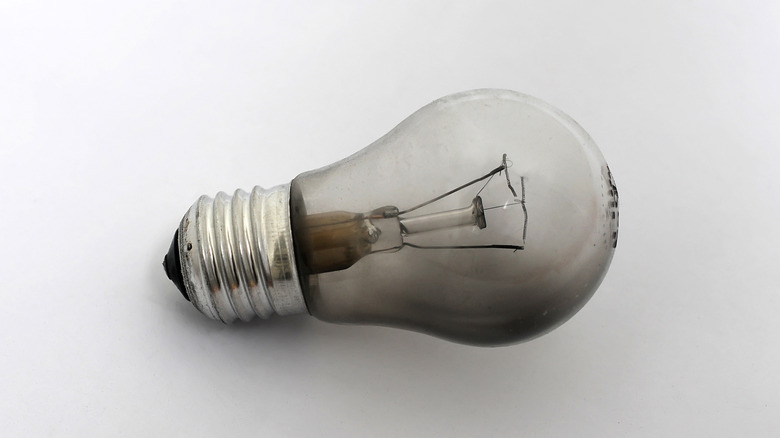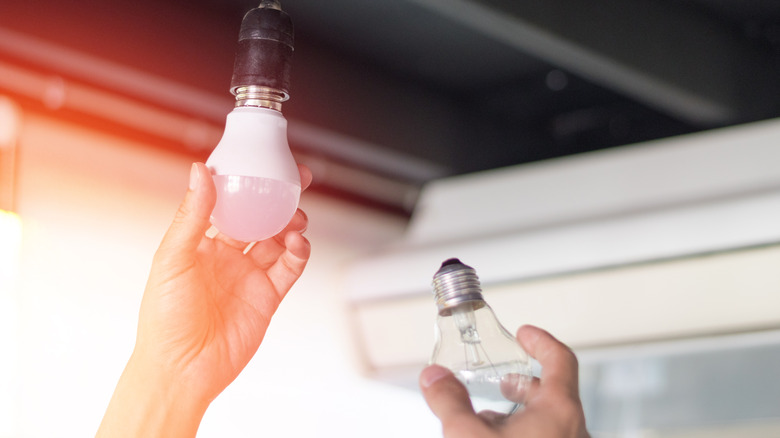Is An Empty Light Socket Dangerous?
Replacing a light bulb is usually pretty simple and straightforward, but sometimes a replacement isn't readily available. You might be tempted to remove and throw away the spent bulb, leaving the light socket exposed until you get around to buying another. But don't; if your issue is with a hardwired light fixture, it is recommended to keep the blown bulb in place until you can replace it.
This is because the socket contains two metal contacts designed to allow electricity to flow to the bulb, explains Best Tiffany Lamps. These will be exposed without a bulb intact, which means you can potentially receive an electric shock from an empty socket. If the blown bulb belongs to a table lamp, simply unplug the electric cord from the wall and the risk of getting zapped is eliminated. A blown bulb will not use electricity because the circuit is broken, so it won't cost anything to leave it until replaced.
Other light socket dangers to consider
According to Pucket Electric, danger is also present during the process of changing a bulb. The bulb itself is not dangerous, although it is fragile and should be handled with care. They recommend turning off the power at the light switch before removing an old bulb or installing a new one. If electricity runs through the fixture at the time of installing a new bulb, it can cause the glass to shatter, posing a serious risk of injury, warns LED Lighting Info.
Additionally, when purchasing a replacement bulb, making sure you choose the right type can save you problems down the road that can lead to frequent light bulb replacement. Pucket Electric says there are four main types of bulbs on the market: incandescent, halogen incandescent, LED, and CFL. Moreover, within those types, there are different sizes, watts, lumens, and characteristics such as the warmth of light, color, and 3-way capability.

